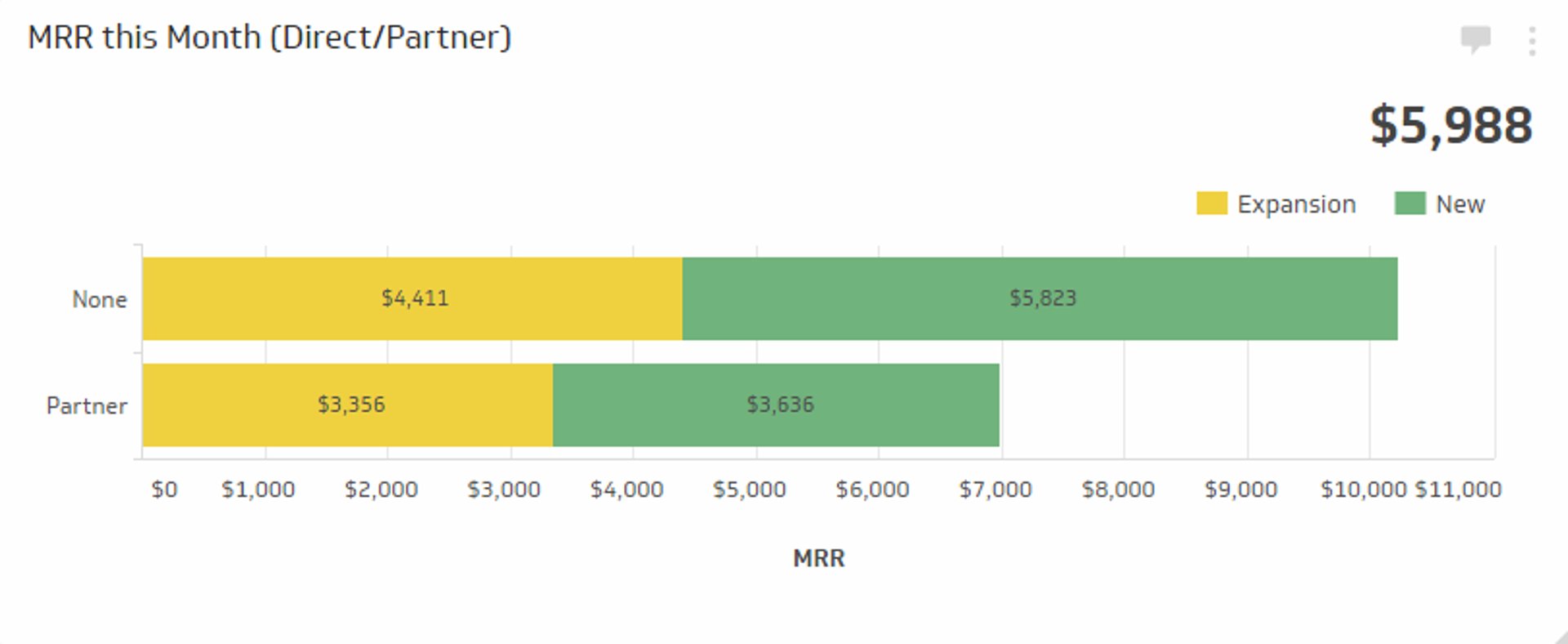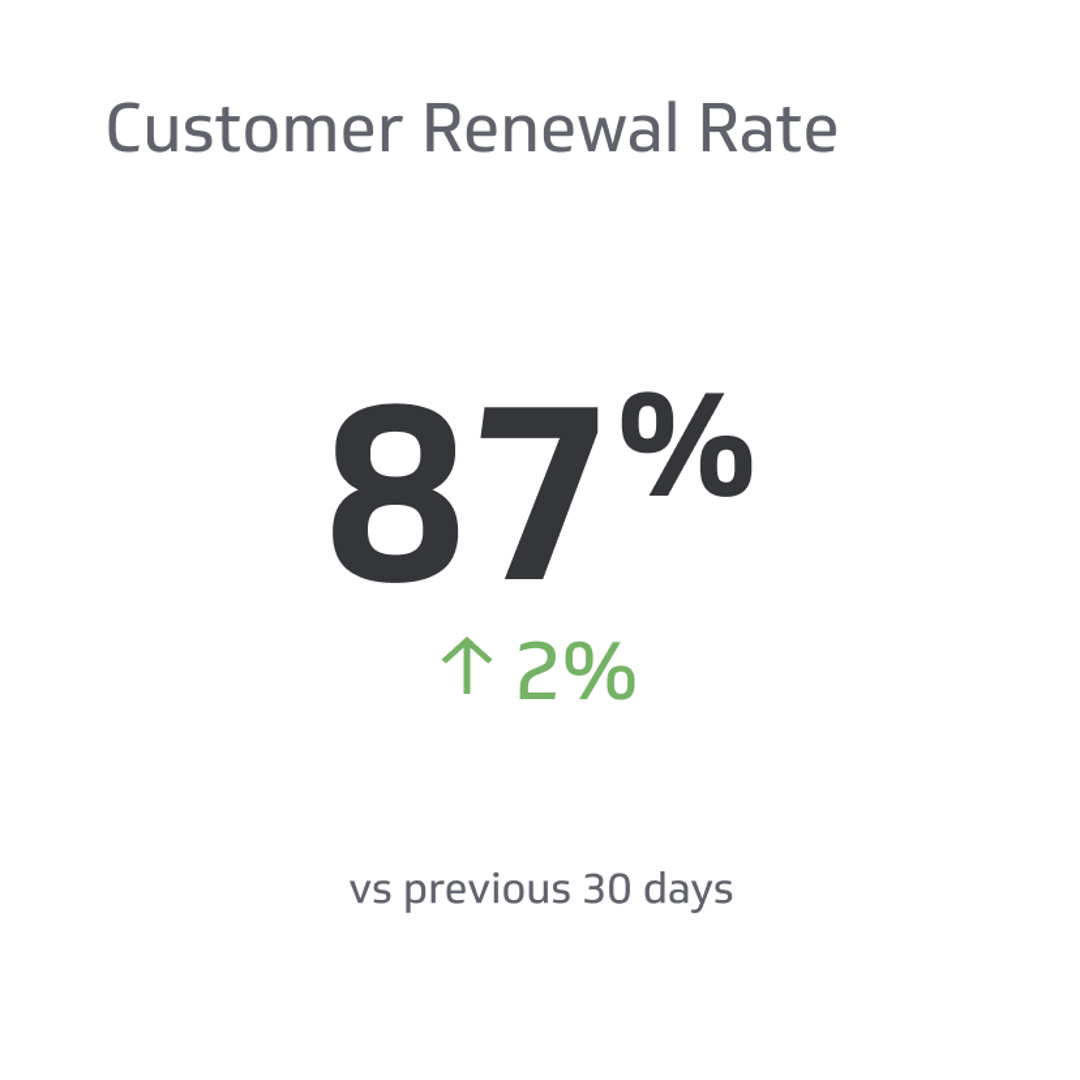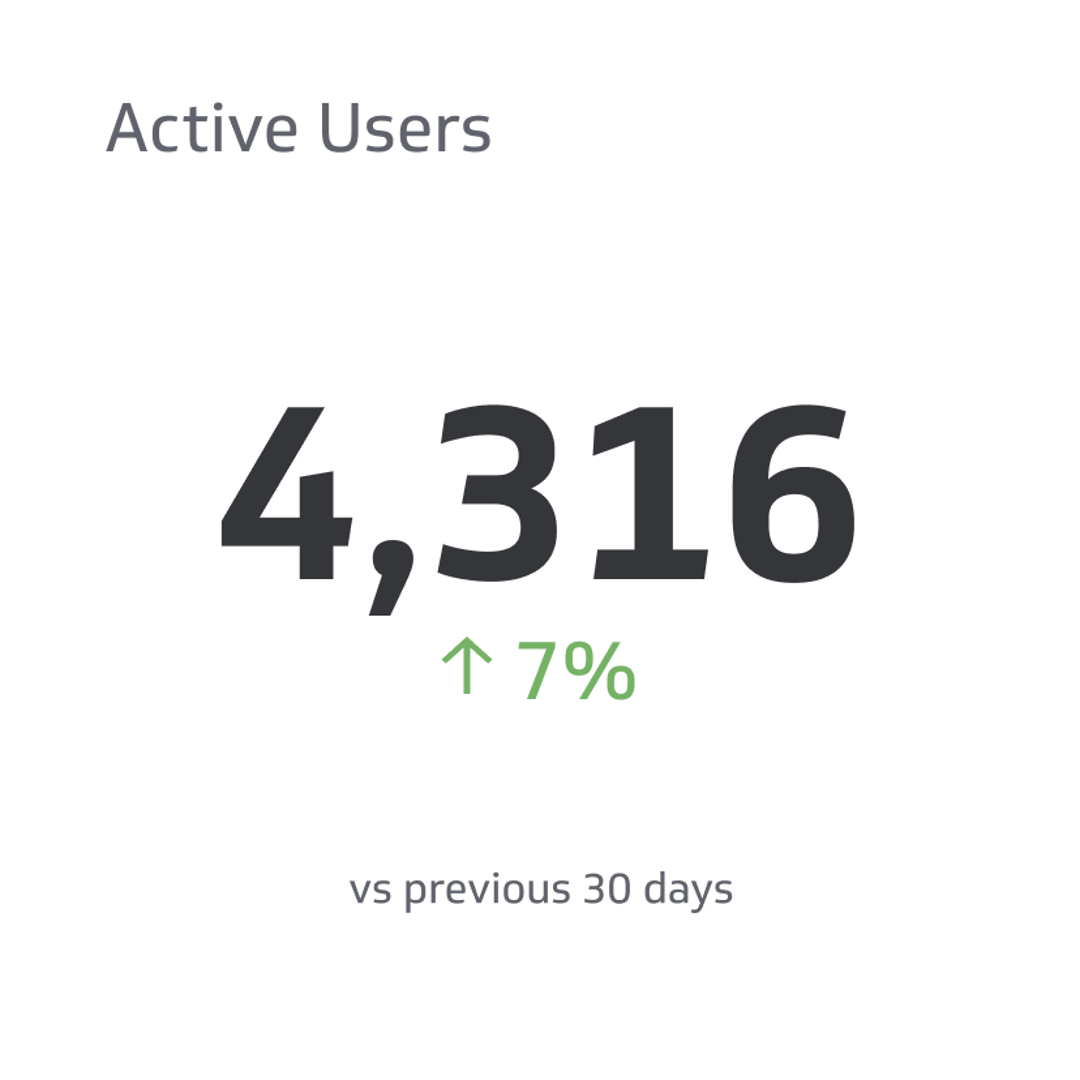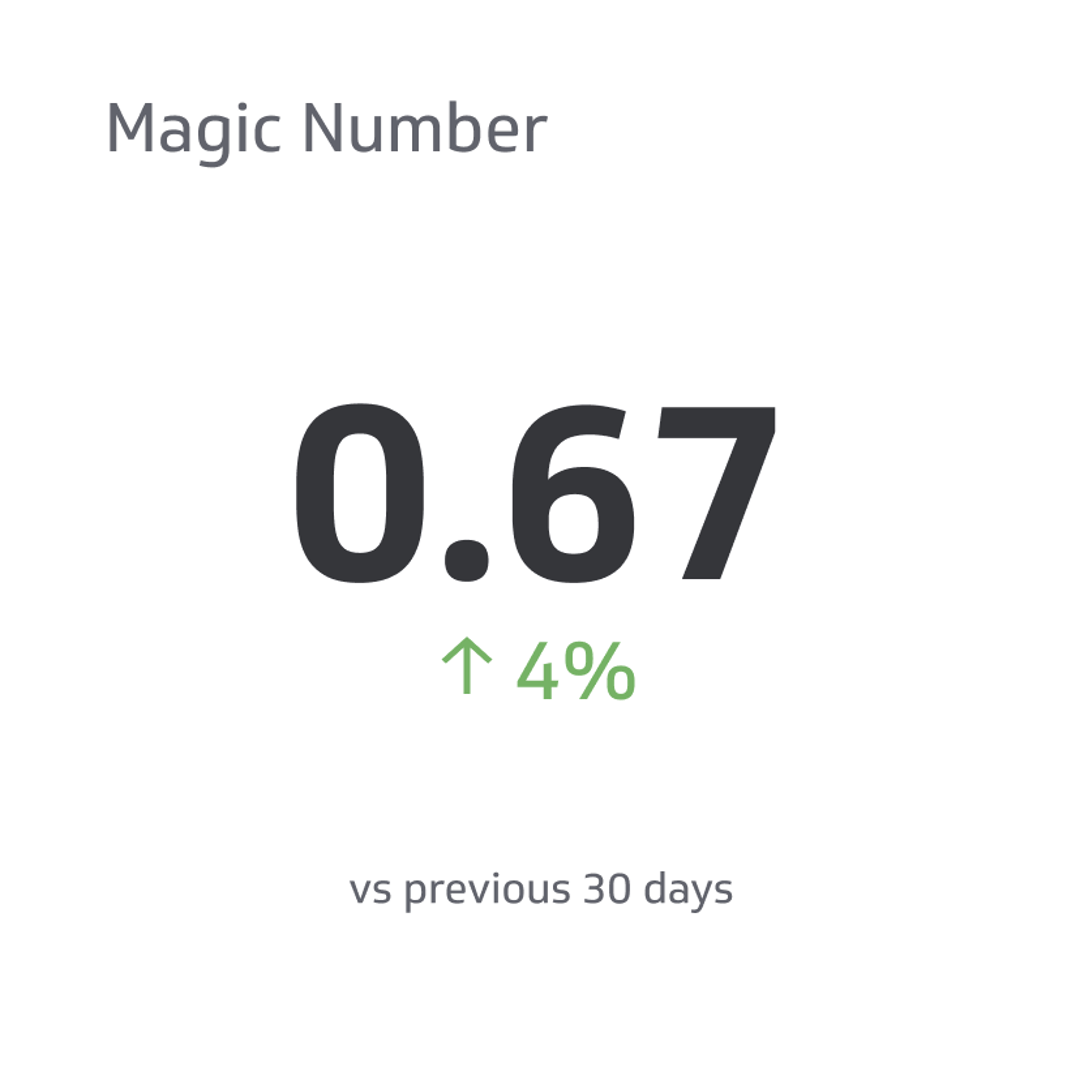Monthly Recurring Revenue (MRR) Expansion Rate Metric
The ultimate guide to understanding, calculating, and improving the metric that fuels sustainable SaaS growth.
Track all your SaaS KPIs in one place
Sign up for free and start making decisions for your business with confidence.

Measure Revenue Growth From Existing Customers With the MRR Expansion Rate KPI
For subscription businesses, growing revenue from the customers you already have is a powerful sign of success. This is measured by the MRR Expansion Rate, a key performance indicator that shows the additional monthly recurring revenue generated from your existing customer base. It signals that customers are finding more value in your product, leading to more stable, predictable growth for your company.
What is MRR Expansion Rate?
The Monthly Recurring Revenue (MRR) Expansion Rate measures the percentage increase in revenue from existing customers month-over-month. This growth comes from upgrades to more expensive plans, purchasing add-on features, or increasing the number of users.
It specifically excludes any new revenue from newly acquired customers, focusing only on the growth generated within your current user base. A healthy MRR Expansion Rate shows that your customers are satisfied and loyal, directly contributing to sustainable business growth.
How do you calculate MRR Expansion Rate?
To calculate the MRR Expansion Rate, you need two figures: the total expansion MRR for the month and the total MRR at the beginning of the month.
The components:
- Expansion MRR: The additional monthly recurring revenue from existing customers (upgrades, cross-sells, and add-ons) in a given month.
- MRR at Start of Period: The total monthly recurring revenue from all customers at the beginning of the same month.
The formula is:
(Expansion MRR / Total MRR at Start of Period) * 100
For example, if your Expansion MRR for the month is $10,000 and your total MRR at the start of the month was $200,000, your MRR Expansion Rate would be 5%.
($10,000 / $200,000) * 100 = 5%
Why is MRR Expansion Rate important?
Tracking your MRR Expansion Rate is critical for understanding the health and growth potential of a subscription-based business. It provides insight into customer satisfaction and product value.
- Drives capital-efficient growth: It costs significantly less to generate revenue from existing customers than to acquire new ones. Focusing on expansion is a cost-effective way to grow.
- Indicates customer satisfaction: When customers upgrade or buy more, it’s a strong signal that they are happy with your product and see its value.
- Enables negative churn: If your MRR Expansion Rate is higher than your churn rate (revenue lost from cancellations and downgrades), you achieve net negative churn. This means your business would grow even if you didn’t acquire any new customers.
- Improves revenue predictability: Strong expansion revenue makes financial forecasting more reliable and demonstrates a stable, scalable business model to investors and stakeholders.
What is a good MRR Expansion Rate benchmark?
While benchmarks can vary by company size and industry, a general consensus exists for SaaS companies.
- Average: A monthly MRR Expansion Rate between 10-15% is considered healthy for most SaaS businesses.
- Excellent: A rate between 16-20% indicates outstanding performance and a strong product-market fit.
- World-Class: Consistently achieving a rate above 20% is rare and places a company in the top tier of SaaS performers.
For smaller or early-stage companies, the rate might be higher as they have more room to grow with their initial customers. The key is for your expansion rate to consistently outpace your revenue churn rate.
How can you improve your MRR Expansion Rate?
Improving your MRR Expansion Rate involves creating more value for your existing customers and making it easy for them to access it.
- Use tiered pricing: Structure your pricing plans so that customers can easily upgrade to a higher tier to access more features or higher usage limits.
- Offer valuable add-ons: Develop and sell optional features or services that solve specific problems for your customers, allowing them to customize their subscription.
- Align with customer success: Your customer success team is on the front lines. Empower them to identify upsell opportunities by understanding customer goals and proactively suggesting solutions.
- Communicate value: Regularly inform users about underutilized features and the benefits of upgrading. Use in-app messages, email campaigns, and tutorials to highlight the value they can unlock.
How to track your MRR Expansion Rate
Monitoring your MRR Expansion Rate is most effective when done on a centralized dashboard. This allows you to view it alongside other critical SaaS metrics like churn rate, customer lifetime value (LTV), and customer acquisition cost (CAC). Tracking these KPIs together provides a complete picture of your company's financial health and growth drivers.
Ready to get a handle on your most important metrics? Build your own real-time dashboard to monitor your MRR Expansion Rate and other key performance indicators. With a tool like Klipfolio Klips, you can connect to all your data sources automatically and create beautiful, easy-to-understand visualizations that keep your whole team aligned.
Related Metrics & KPIs



